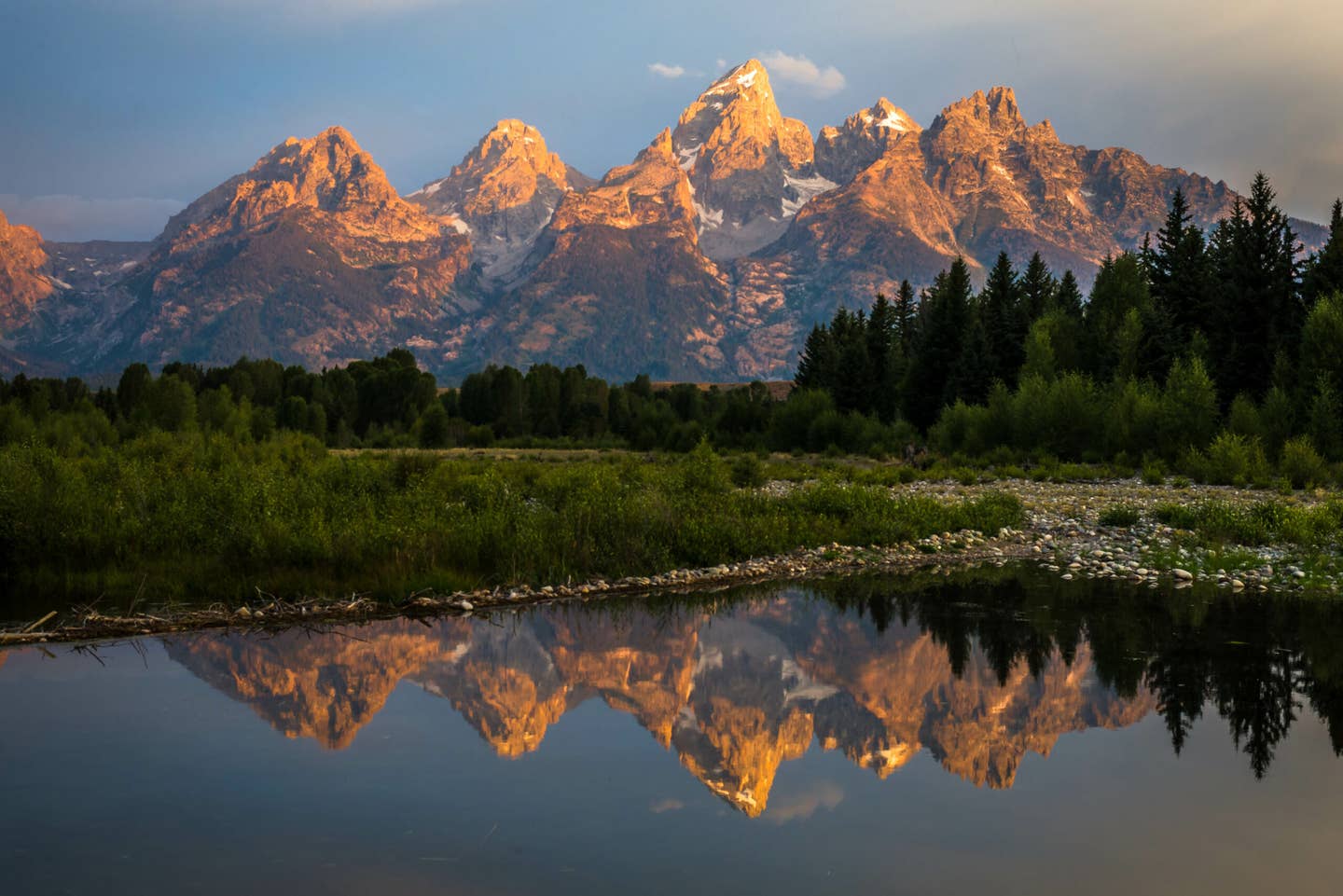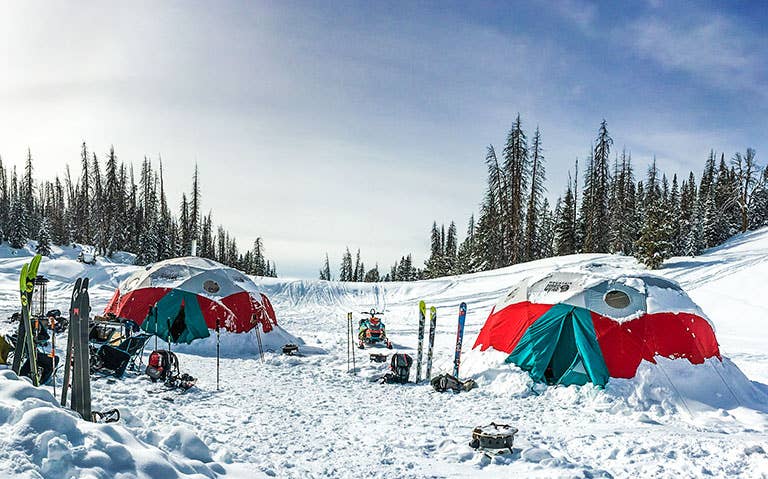

Why Sustainability in Outdoor Gear Matters
Popular Stories
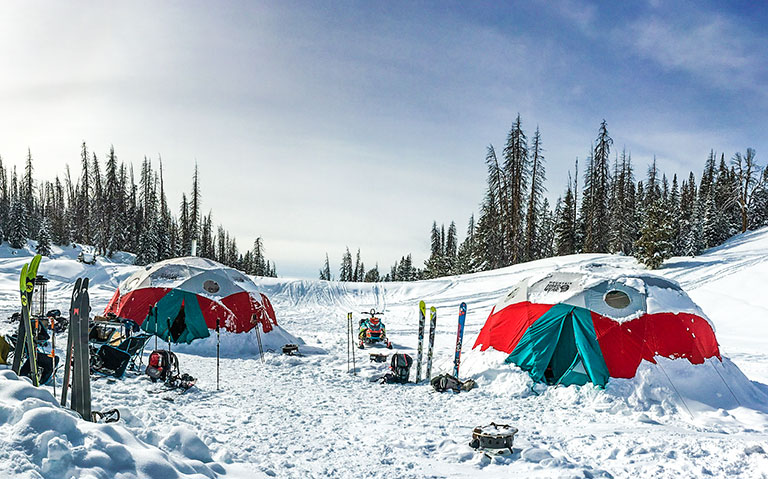
Taking toxic chemicals out of tent fabrics is just one way the outdoor industry is addressing sustainability. Mountain Hardwear photo.
1. We like to play outside.
2. Many of the products we use to play outside are bad for the environment.
In a 2016 study, Duke University researchers found that most commercially-available recreational tents were covered in chemicals hazardous to human health. What started off years ago as an initiative to make tents safer by coating them in flame-retardant chemicals to prevent fiery accidents, ended up creating sleeping spaces covered in toxic substances. The study showed that sleeping in these tents left campers exposed to high levels of these chemicals. So is camping bad for you? Well, not really if you take steps like washing your hands after set-up, properly venting the tents, and avoiding cooking inside the tent.
Issues like these are pervasive in the outdoor world, with the gear that enables to do what we love often having a nasty back story when it comes what’s inside. Fact is, we wear and use a lot of plastic, whether it’s in the form of jackets, ropes, sleeping bags, or tents, and creating all that isn’t very clean. Plastic and large-scale manufacturing aren’t exactly good for the world, but a few outdoor brands are realizing this and stepping up their game to make a difference.
You’ve likely already heard of initiatives like Patagonia’s Worn Wear, put in place to reduce waste and extend the life of your gear, or the fact that Patagonia and The North Face are using more and more recycled materials in their clothing. But Mountain Hardwear is taking it a step further, looking deep into their manufacturing processes to remove harmful chemicals like those toxic flame retardants from tents and harmful dyes from sleeping bags to reduce water and chemical waste.
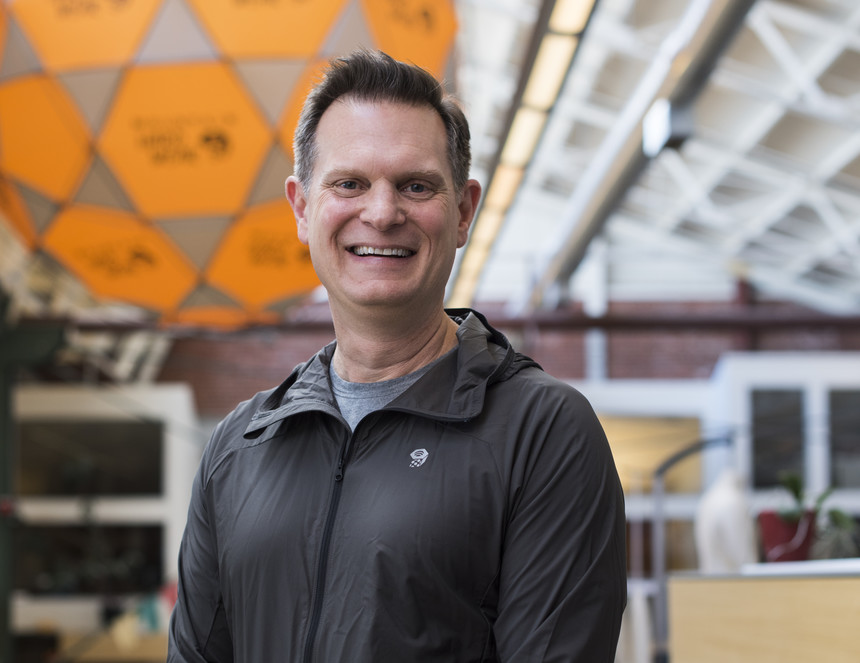
Joe Vernachio, president of Mountain Hardwear, has brought a new focus on sustainability that he believes the outdoor industry desperately needs. Mountain Hardwear photo.
Among these moves, the brand’s President Joe Vernachio has been laser-focused on innovating new ways to make their gear more environmentally friendly. With a career spanning many brands in the outdoor industry and roots in forestry and biology, Vernachio spoke to us about what it takes to keep a brand alive while fighting the good fight.
Can you speak about your background when it comes to sustainability?
I’ve been in this and adjacent industries my whole career, and I’ve learned that if you’re in the “making of stuff” industry, you just have to be conscious of the fact that you consume valuable resources and are creating waste and you need to be considerate of that. We’re just doing our best here to do that. It’s not based on any corporate policy or adhering to regulations, we’re just humans on this earth and feel an obligation to make the right choices based on the information we have. When there’s a tie, we go the more sustainable route. If there’s more than a tie, we still try to make the best ecological decision. We’re hoping those choices will just accumulate.
Was there ever a turning point in your career where you realized sustainability was an issue and you needed to take action?
Years ago, I was working for Nike and we were making millions of cotton t-shirts every month. Like tens of millions a month. Organic cotton was on the horizon, so we went to take a look at it. We went out to cotton fields in the South and looked at the difference between conventional and organic fields, which prompted the decision to shift at least in part to organic cotton. The organic cotton board actually called me and said please don’t do that, you’ll send the organic price through the roof by gobbling up all the capacity. So, then we learned that it takes a cotton famer three years to go organic, and we made a pledge to help cotton farmers go organic by buying up all the transitional cotton at blend it in with our regular cotton. The label on the shirts went from two percent organic to three, to eventually a lot more than that these days.
That was my first initiative into sustainability, and I think I’ve learned a lot since.
When did Mountain Hardwear launch this renewed focus on sustainability?
When I joined, we just did it to outline our values and make sure they were clear. Making sustainable choices was on top of that list. Each time we sat down at the table, mainly the product table, we made sure we were asking all the right questions. That included asking manufacturers about recycled materials, asking about dye chemistry to make sure it was less toxic or using less water. When we could, we would use those materials. It wasn’t really an initiative, it’s just part of our ethos.
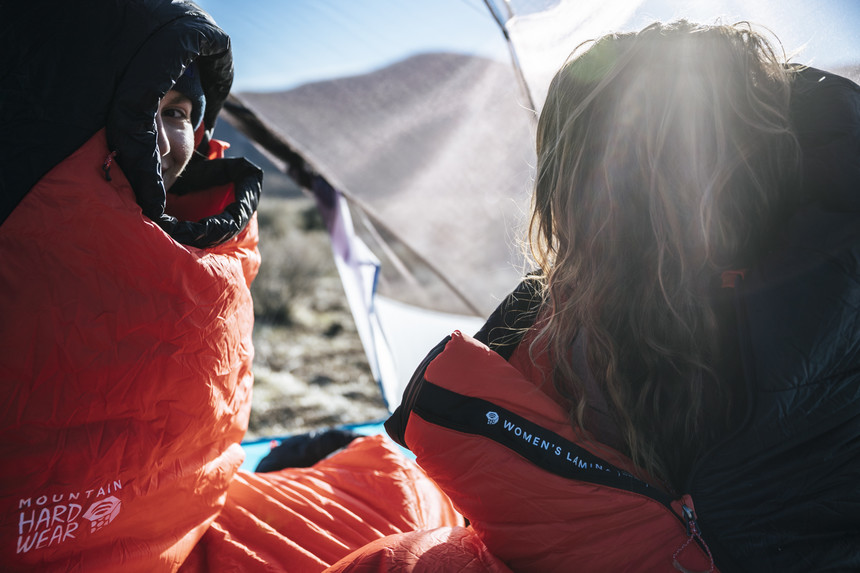
Would you sleep in a tent covered in toxic chemicals? Mountain Hardwear photo.
Are there any measurable results on environmental impact? Any sort of before vs. after from going down that road?
In very general terms, we’ve gone from 20 to 30 percent to 50 to 60 percent recycled content in volume, for one. We’re not that big of a brand so I’m just estimating that based on what we know. To be honest, the best thing any brand can do if you want to be sustainable is stop making stuff. We are basically just trying to do less bad. There is no product yet that is ecologically beneficial, it’s all degrees of negative. That’s the holy grail we’re trying to find.
Sign Up for the TGR Gravity Check Newsletter Now
Another thing that I’ll stress is that we need to change our way of thinking about products. We need to continue the design process through end-of-life of the object. We need to constantly ask what happens to this thing when it’s done?
What are some steps you are taking to think that way?
There are four points that we take into consideration when designing a new product. For one, we design for durability – that means making stuff that will last for a long time and people can hand off to the next generation. Next, we have a warranty policy that focuses on fixing stuff. A lot of brands will just hand you a gift card, but we’ll actually try to fix the product. We’re getting close to about 70 percent repair of everything that comes back. It requires skills, materials, and a big investment on our part. Third, we’re trying to use recycled materials as much as possible in our products. Finally, we are reducing the use of toxic chemicals in our process and keep those out of landfills in the end.
What other issues can you highlight in terms of sustainable manufacturing?
For one, we’re trying not to have to move stuff all over the world in our manufacturing process. If recycled materials are only available in places like southeast Asia, we have to ask ourselves what the environmental cost of moving it to join the rest of the supply chain would be? We can easily make a product where the yarn is made in Taiwan, it’s woven in China and dyed, then shipped to Indonesia to make a garment, then finally shipped to Germany to sell. Before you know it, it’s criss-crossed the world. We try our best to get materials from as close to the manufacturer as possible.
When a study like the 2016 Duke tent study shows up, how does your brand respond to it?
There have been studies like this coming out frequently. Think back to when we all learned microfibers were all over the ocean. We sat around a table and asked ourselves, what do we do? What’s the solution? A lot of brands and a lot of people first just denied it, but we realized that it does and needed to do something about it. That, unfortunately, was a problem that just kind of faded away because nobody could find a solution to it. Turns out, most of those microfibers came from textiles like fleece shedding over time. The obvious solution was “well we can’t make anything out of a textile then,” and the industry didn’t want to do that. There’s no obvious path to take.
But there are others with an obvious path, like eliminating fire retardant chemicals from tents. We heard about that, and decided it just made sense to remove them. It came with some caveats like not being able to sell them in certain places, but it still made sense. I had some people around a table and asked, “Does anyone want to sleep in a tent full of this stuff?” and everyone said “Of course not!” and we took them out.

Joe Vernacchio believes that small steps will add up and eventually make a big change in the industry. Mountain Hardwear photo.
Do you think these moves are sparking a shift in the industry? Are you getting feedback from other brands?
There’s been no real response from other brands yet, but retailers and consumers are responding positively. For many big brands there are too many politics and too many risks to take to make sweeping changes right now. Also, I think for smaller brands that only make one thing, you’re scared to death. Luckily, for us, we’re kind of in the middle, so we’ll do all the postholing and people can follow us!
What’s to see in the future?
In the near future, these kinds of products will not be an anomaly. Look at paper today, almost all of it is now some sort of post-consumer or recycled product. That took a few years, but it’s worked out. Ironically, I don’t want to our moves as a competitive advantage, because that defeats the purpose. Consumer purchasing behavior isn’t changing things drastically, so it’s really up to the brands to lead the way.

